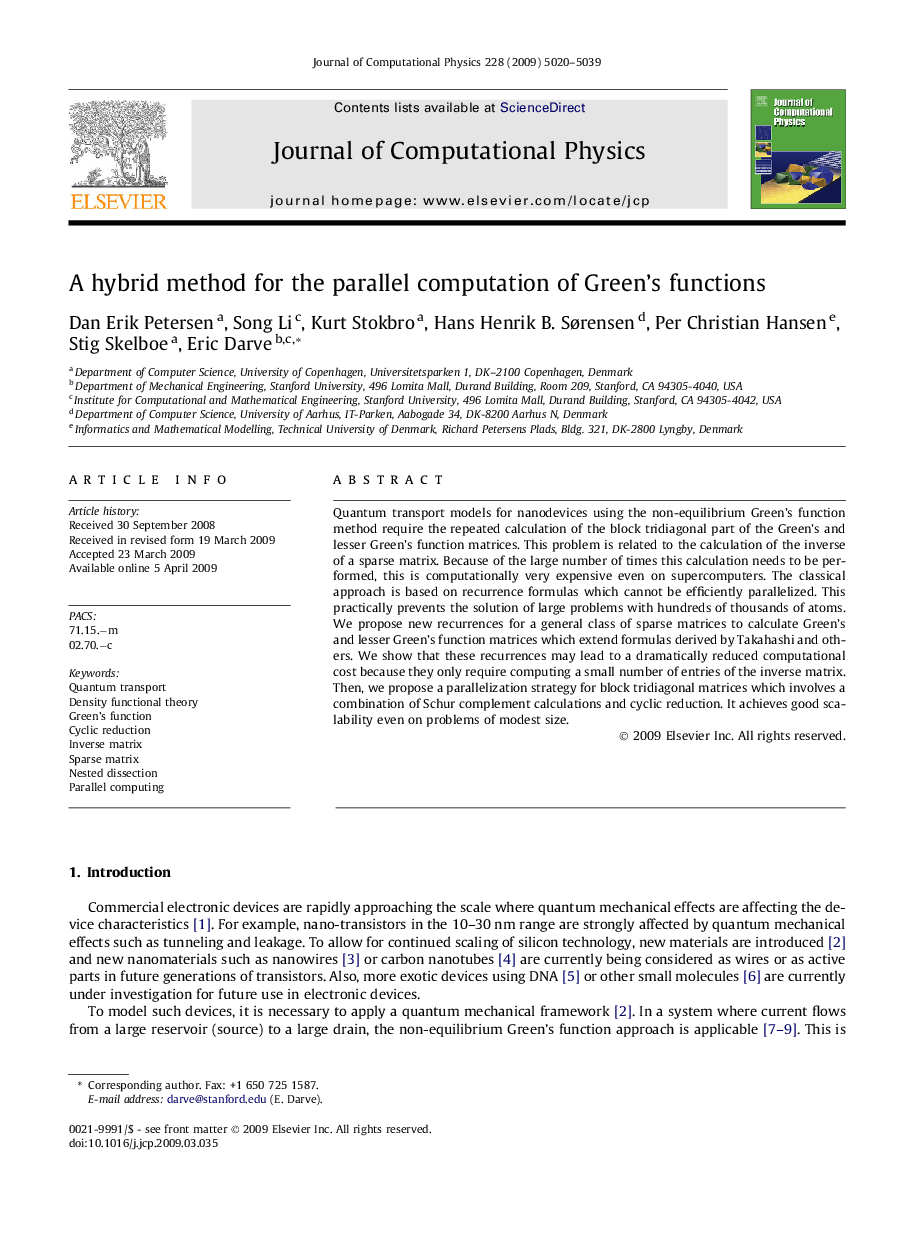| Article ID | Journal | Published Year | Pages | File Type |
|---|---|---|---|---|
| 10357132 | Journal of Computational Physics | 2009 | 20 Pages |
Abstract
Quantum transport models for nanodevices using the non-equilibrium Green's function method require the repeated calculation of the block tridiagonal part of the Green's and lesser Green's function matrices. This problem is related to the calculation of the inverse of a sparse matrix. Because of the large number of times this calculation needs to be performed, this is computationally very expensive even on supercomputers. The classical approach is based on recurrence formulas which cannot be efficiently parallelized. This practically prevents the solution of large problems with hundreds of thousands of atoms. We propose new recurrences for a general class of sparse matrices to calculate Green's and lesser Green's function matrices which extend formulas derived by Takahashi and others. We show that these recurrences may lead to a dramatically reduced computational cost because they only require computing a small number of entries of the inverse matrix. Then, we propose a parallelization strategy for block tridiagonal matrices which involves a combination of Schur complement calculations and cyclic reduction. It achieves good scalability even on problems of modest size.
Keywords
Related Topics
Physical Sciences and Engineering
Computer Science
Computer Science Applications
Authors
Dan Erik Petersen, Song Li, Kurt Stokbro, Hans Henrik B. Sørensen, Per Christian Hansen, Stig Skelboe, Eric Darve,
